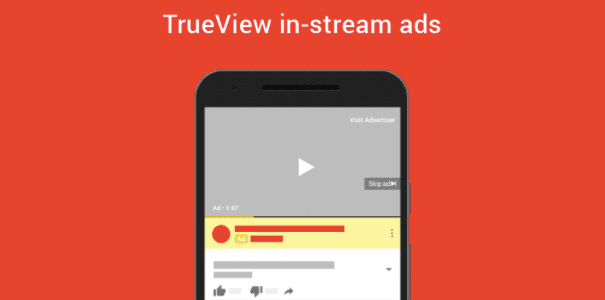When it comes to social media marketing, YouTube and Instagram are both excellent options for visually creative brands with original video content.
While YouTube has been deemed the top video-sharing platform for the past decade, the rise of vertical video lends Instagram a competitive edge through Instagram TV (IGTV).
So, how do you decide which platform is best for your social media strategy?
To help you decide, we’re comparing YouTube to Instagram.
Here’s what we’ll be going over:
Table of Contents
Start your free 14-day Fanbooster trial
Regardless of the video platform you choose, one thing is for sure: consumers crave video content from businesses.
Wyzowl’s 2020 State of Video Marketing confirms this, revealing that 86% of consumers want to see more video content from brands.
Getting to know YouTube and Instagram
YouTube: The Basics
YouTube is a free video-sharing platform for brands, marketers, and content creators.
Founded in February of 2005, YouTube was in the social space for less than two years before Google snatched it up. In November of 2006, Google bought YouTube for a cool $1.65 billion and it has been operating as a subsidiary ever since.
From its humble beginnings, YouTube has come a long way, from amateur home videos to the internet’s largest video platform.
According to YouTube’s internal data, there are over two billion monthly users across the globe — with over one billion hours of content consumed each day.
As a powerful, free social media channel, you may be wondering how YouTube makes any money.
How Does YouTube Make Money?
Like many other free platforms, including Instagram, YouTube primarily profits from advertising revenue. The YouTube business model provides a platform for businesses and individuals to upload and host video content for free. In return, YouTube sells advertising capabilities to brands. The targeted ads can be embedded into the video-content consumers are watching.
In short, YouTube makes its money off of viewers.
According to the 2019 Q4 report from Alphabet (the parent company of Google and YouTube), YouTube generated $15.1 billion in ad-revenue — nearly 10% of Google’s total earnings.
Key Takeaways:
- YouTube makes money by profiting from advertising revenue.
- YouTube ads can be embedded directly into monetized creator channels.
- In 2019, YouTube generated $15.1 billion in ad revenue.
Instagram: The Basics
Instagram was initially founded as an online platform for photo-sharing in 2010. It was acquired by Facebook two years later for $1 billion. Since the acquisition, Instagram has increased its capabilities to support video content in-feed, through Stories, IGTV, and Reels.
Unlike YouTube, Instagram allows you to publish both static imagery and dynamic video content.
In 2017, Instagram released internal data showing an 80% increase in time spent consuming video on their platform.
Additionally, 2018 data from Statista shows Instagram has one billion monthly active users worldwide.

Sure, it’s not quite the two billion monthly active users that YouTube boasts, but still a decent number.
Instagram is another free platform. Let’s delve into how the company earns revenue.
How Does Instagram Make Money?
Similar to YouTube, the Instagram business model is advertising-based. In exchange for free use of the platform, Instagram makes money when users and businesses pay for promotions.
These promotions offer various ad formats to choose from — like Stories or Collection ads — that show in Instagrammers’ accounts.
While Bloomberg reported Instagram’s ad revenue at $20 billion for 2019, it’s challenging to know the precise number. Facebook doesn’t break out Instagram’s ad earnings from its own, so the information came from anonymous inside sources.
Key Takeaways:
- Instagram makes money by profiting from ad revenue.
- Instagram ads can show up in user feeds or Stories.
- Bloomberg reported Instagram’s ad revenue at $20 billion for 2019.
Comparing Youtube to Instagram for your social media marketing strategy
Before we compare YouTube to Instagram for your social media marketing strategy, there are a few considerations to keep in mind:
- The type of content you’ll be posting
- The quality of your content
- Your marketing budget
Now, onto the juicy information.
YouTube vs. Instagram: User Demographics
Always research user demographics for any social media platform you’re considering to ensure it actually aligns with your audience.
While Instagram has more sway with a younger crowd, YouTube has a broader audience range.
Statista’s 2019 research discovered that 81% of YouTube users in the United States are between the ages of 15-25. As the ages increase, users drop off slightly, with 71% of YouTube users being between the ages of 26-35 — and 67% between the ages of 36-45.

Comparatively, Pew Research Center’s 2019 survey found that 75% of Instagram users in the U.S. are between the ages of 18-24, with just 57% of users between the ages of 25-29. For Instagrammers between the ages of 30-49, usage drops below 50%.
The survey also found that while Instagram use is more prevalent among females, YouTube is more popular among males.
YouTube vs. Instagram: Video Features
When comparing the video features of YouTube to Instagram, the most apparent difference is that YouTube is for longer videos and Instagram is for quick, snackable videos.
With YouTube, unverified brand accounts can upload videos up to 15 minutes long; verified brand accounts can upload videos up to 12 hours.
On Instagram, there are a few different video lengths based on placement:
- In-feed: Videos must be between 3-60 seconds.
- IGTV: Videos can be up to 15 minutes when uploading via mobile, and 60 minutes when uploading via the web.
As a Google-owned company, YouTube’s videos display in the search engine’s results. Conversely, Instagram videos do not.
However, when it comes to mobile-optimization, Instagram’s IGTV and Reels are built for vertical consumption.
YouTube vs. Instagram: Business Advertising
We know that both YouTube and Instagram make their money from advertisers, but what options do they provide for advertising?
With YouTube, all advertisements get created through Google Ads. YouTube also uses an opt-in ad program called TrueView, which includes two ad-types: in-stream or video discovery.
In-stream ads can either be skippable or non-skippable.
With skippable ads, you only pay when a viewer watches at least 30 seconds or clicks on any video element. With non-skippable ads, you pay per impression.

Video discovery ads are placed alongside YouTube search pages, next to other videos, or websites on the Google Display Network. You only pay when a viewer clicks on your video.

Due to the cost structure, YouTube is an excellent option for testing out longer video ads (no time limit imposed) or experimenting with new content.
YouTube offers a variety of in-depth targeting options, including:
- Detailed Demographics (i.e., higher-income households and shared traits)
- Web and app remarketing
- Interests
- Custom match (similar to Instagram’s custom audience targeting)
Unlike Instagram’s analytics for promotions, YouTube provides real-time insights.
As a Facebook subsidiary, you have access to all of its detailed targeting options when you advertise on Instagram, including:
- Location
- Demographics
- Custom audiences
- Behaviors
You can create ads in the Instagram app directly or through Ads Manager like you would for Facebook promotions.
Instagram offers multiple ad formats, from video ads to immersive Collection ads that combine rich-media content.
Advertisers on Instagram pay on a cost-per-click basis through an auction-based bidding model.
For ease-of-use, when comparing YouTube to Instagram, Instagram is more user-friendly.
Final Thoughts: Comparing YouTube to Instagram for Social Media Marketing
Determining the right social networks to include in your social media marketing strategy can seem overwhelming. As tried-and-true social media platforms, both YouTube and Instagram offer unique benefits for visually-focused brands.
When selecting the best platform for your needs, remember to do your homework first and consider the types of content you’ll be publishing.



